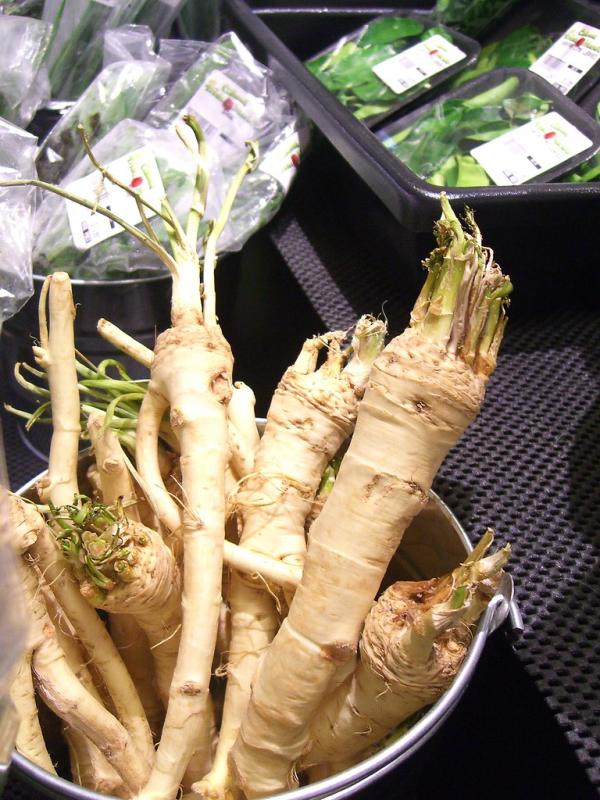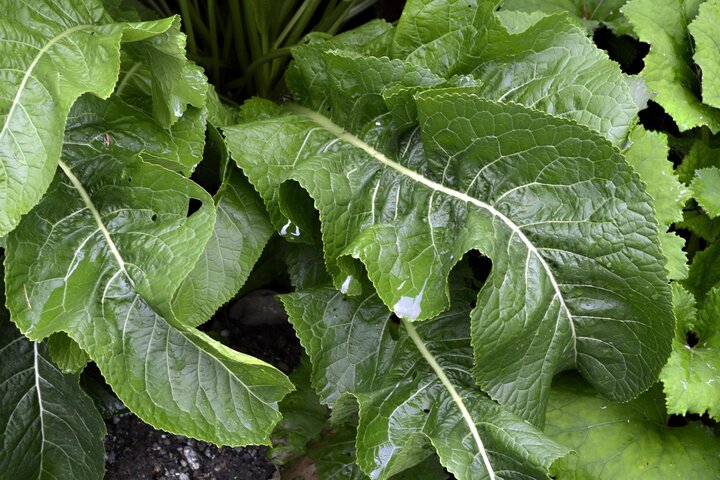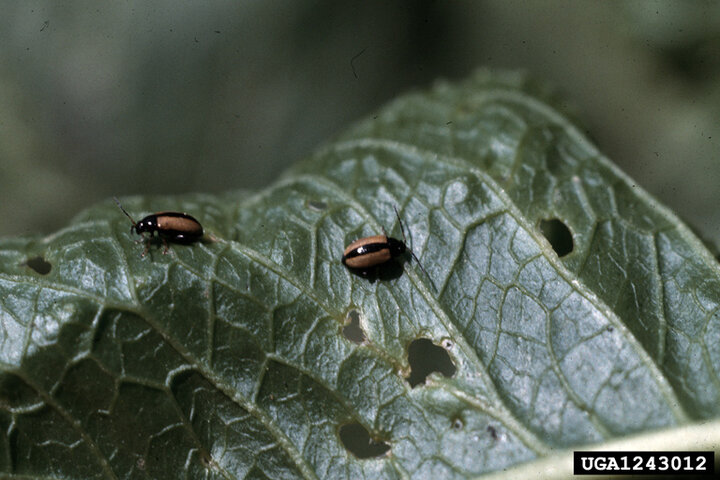Sarah Browning, Nebraska Extension Educator

"Fresh Horseradish - Colonial Fresh Markets - Chadstone Shopping Centre" by avlxyz, CC BY 2.0.
If you’ve never tasted horseradish, Armoracia rusticana, then think wasabi, Wasabia japonica. These two foods have a nearly identical flavor, often described as peppery, spicy and pungent, however, the sharp taste of horseradish only lasts a short time and doesn’t sear your mouth like hot peppers do.

Both the leaves and roots of horseradish are edible, although most gardeners primarily focus on harvesting roots. Leaves have a sharp, bitter, peppery flavor similar to arugula or kale. They are best harvested young and can be eaten sauted, boiled or steamed. Young tender leaves can be blended into other salad greens for fresh eating.
Horseradish plants are in the Brassica family, along with wasabi, broccoli and cabbage, and have been cultivated by humans for over 3,000 years.
Varieties
There are two broad categories of horseradish. Common or ‘Maliner Kren’ horseradish has broad crinkled leaves and is considered to have superior eating quality, however, is it susceptible to white rust and turnip mosaic 1 virus. Bohemian-type horseradish has smooth narrow leaves, smaller roots, somewhat lower quality, but better disease resistance. Common Bohemian cultivars include ‘Bohemian Giant’, ‘New Bohemian’, ‘Sass’ and ‘Swiss’.

‘Big Top Western’ horseradish is a variety bred for disease resistance, especially to turnip mosaic 1 virus. It has large roots and wide smooth leaves.
Finally, ‘Variegata’ is a cultivar offering ornamental coloring as well as tasty roots. Its’ dark green leaves with splashes of cream are large and wavy. Plant vigor is slightly lower than the standard green varieties, so it may take 2-3 years from planting to achieve a nice stand.
Plants can be purchased as root cuttings, crowns or as plants.
Planting
A small planting of horseradish is all that is needed in most gardens. Three to four plants will provide enough for family needs. And be advised – once established, horseradish can be difficult to eradicate. Even very small root sections will resprout and grow, so it may be advisable to plant it in a confined area.
Root cuttings should be 8-10 inches long. Plant the roots either vertically or slanted downward, but the top and bottom should not be reversed. Space plants 1-foot apart.
Care
Compared to other vegetables, horseradish tolerates considerable neglect, but plants will grow better if weeds are controlled and plants are mulched to conserve soil moisture.
A process called lifting and stripping it used to obtain large non-branching roots. This is best done when the leaves are first 8-10 inches long, then again six weeks later. Start by removing soil around the sides of the plant’s crown. Remove small roots from the sides (but not the bottom) of the crown. Remove soil carefully to avoid damage to roots at the base of the crown. Once the side roots have been removed, put the soiI back in place.

Harvesting
Horseradish makes its greatest growth during late summer and early fall, so harvest is best delayed until October or early November. Dig a 12- to 24-inch-deep trench down one side of the plant providing access to the roots. Use a spading fork or shovel to remove the plant crown and roots.
Trim the foliage and stem to 1-inch above the roots. Trim off any small side roots. Store harvested roots under cool, 32 to 40 degrees F, and humid conditions. Do not expose them to light or they will turn green.
Smaller root cuttings, 8-inches or longer, taken at this time may be replanted or stored for spring planting. Make a flat cut at the top of the root and a slanted cut at the bottom so roots can be oriented and planted correctly next year.
If a good location for storing the roots is not available, harvest roots in spring as soon as new growth begins to appear.
Roots left in the ground for two years or more will become woody and stringy.
Cooking
Fresh clean roots grated directly into 5% strength white wine or distilled vinegar provide a tasty condiment to accompany meat and fish dishes. Use of cider vinegar will result in prepared horseradish turning brown. Freshly grated horseradish will only keep for a few weeks in the refrigerator, so prepare a fresh batch as needed.
References:
Growing horseradish in home gardens. (2018). UMN Extension. Retrieved July 5, 2022.
Neild, R. E., Whitney, W. C. (1972, October 19). Growing Asparagus, Rhubarb and Horseradish in Nebraska Gardens. Nebraska Extension. Retrieved July 5, 2022.
Schoneweis, S, et al. (2003). Vegetable Culture Guide. In The Nebraska Master Gardener Handbook;(pp. 443–444). University of Nebraska Cooperative Extension.
Images
- Horseradish foliage. Image from Pixabay.
- Horseradish flea beetles can damage the foliage, but don't affect the roots. Image by Whitney Cranshaw, Colorado State University, Bugwood.org.
- Horseradish roots ready for grating. "Horseradish Kren (directly from Austria)" by Ibán is licensed under CC BY-NC-SA 2.0.